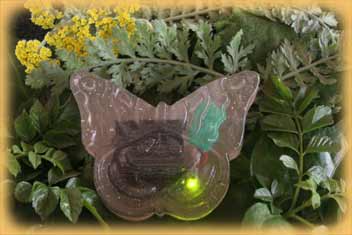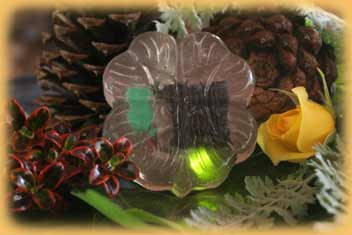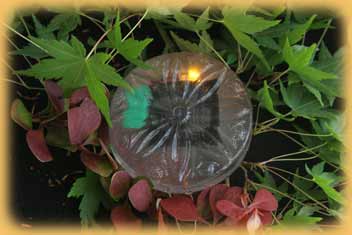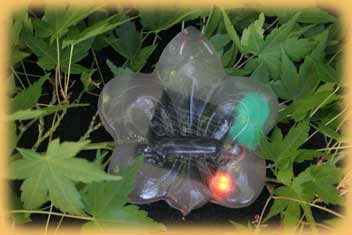Humble Earth™ Fireflies
Patented in the U.S. and InternationallyWe are Redesigning our Fireflies
At this time we are sold out of our past versions of fireflies. We are working hard to bring you version 4. We hope to have them ready before the end of 2015.

Butterfly
Our original green firefly with our original blink pattern, (a smooth buildup of light growing brighter and then dimmer); mimicking the most commonly found firefly species, P. pyralis. This Humble Earth Firefly measures approximately 4" in diameter by 2/3" in thickness.

Shamrock
The same green as our original firefly, but with a special blink pattern all its own (a double flash that then fades away); mimicking the firefly species P. pennsylvanica. This Humble Earth Firefly measures approximately 3" in diameter by 2/3" in thickness.

Roundel
A yellow-gold firefly with a throbbingly individual flash pattern (five rapid flashes before fading away); mimicking the firefly species P. versicolor. This Humble Earth Firefly measures approximately 3" in diameter by 2/3" in thickness.

Fleur de Lys
A red-orange color with a uniquely bold flash pattern (slowly growing brighter and brighter before peaking and quickly fading away); mimicking the firefly species P. crescens. This Humble Earth Firefly measures approximately 3" in diameter by 2/3" in thickness.
Try our special Monthly Subscription!
Would you like to bring your entire garden to life with Humble Earth Fireflies, but can't budget the entire purchase into one month? Try our monthly subscription option!
Each month we will send you the number of fireflies you subscribe for, charging your payment method of choice, and you can quickly grow your firefly garden.
Just think, rather than having one large payment, you can budget it out until your garden is filled with the level of joy and wonder you desire!
Click here to see the cause supported by Humble Earth Fireflies!
Bring beauty and sparkle to your gardens with Humble Earth™ Fireflies.
If you grew up in an area where there were fireflies, then you know the peace and beauty a garden or field of fireflies can create.
Our fireflies bring this peace and beauty home to you. They bring your garden to sparkling life, whether you live in a location where fireflies are not present, where they are not heavily populated, or you just want to bring home the look of fireflies twinkling in your garden every evening.
Humble Earth's Fireflies flash a small accurately colored and patterned glow readily recognized by all firefly lovers. They begin flashing around twilight and flash for the first two hours of the evening, each firefly mimicking one of the four species of fireflies available for you to order.
Humble Earth's Fireflies are hand made in California, solar powered, water resistant, and come ready to hang, individually, in your garden.
Firefly Facts
Fireflies are native to 95% of the earth's continental surface. There are more than 2000 species of fireflies. They are found in temperate and tropical areas.
Fireflies are actually a beetle whose abdomen glows, during the mating season, to attract mates. The glowing effect comes from a special bioluminescent chemical compound in the lower abdomen of the beetle.
Each species not only glows a slightly different color, varying from whites, blues, and greens to yellows, pale reds and oranges, but also exhibits a slightly different flash pattern. In some tropical areas there is a unique phenomena where the fireflies synchronize their flashing as the night progresses.
In other areas fireflies glow continuously and do not flash at all. Most commonly, multiple species of fireflies will be flashing their unique patterns and looking for the correct response patterns from prospective mates while ignoring other fireflies' flashing patterns.
Humble Earth's Fireflies are currently mimicking 4 different species, one of which is modeled off of one of the most common species found in the world, with a light green color flash that is displayed during the first two hours after twilight.
Want more information on fireflies, or to help researchers find out what is killing the firefly populations? Check out this website: Firefly Watch.